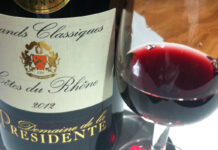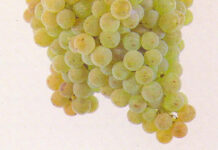Luke Richardson is a sommelier who has worked in a range of venues across the UK in a career spanning more than 20 years. In his column for SLTN he shares his thoughts on all things wine-related and answers your questions about wine. If you have a question for Luke email it to sltn@peeblesmedia.com

Hello again all.
As Christmas looms closer, I thought this time around I would look at port in some depth, and how different examples pair with different styles of cheese as it is a great time of year to be up-selling this combination!
Once a mainstay of the bar, port has become generally less popular throughout the year – except for at Christmas. At the better value end of the scale you have ruby port – often a multi-vintage wine and a fairly good all rounder. Like all port, it is fortified with aguadiente – a mix of sugar and brandy. Ruby ports are made from several vintages and tend to be made with younger wines. Generally best with hard cow’s milk cheese and blue cheese. Expect to pay around £8+.
Next step up is an LBV (Late Bottled Vintage) – wine made from just one vintage and a little bit more full bodied. Aged for around six to eight years in large barrels then bottle-aged after that, they match the same types of cheese as a ruby but have a bit more finesse and a bit more length on the palate. Expect to pay around £12+.
Your premium end comes from either straight vintage port, or aged tawny ports. Vintage ports are aged for between 18 to 20 months in barrel, then bottled. The best are left for over 20 years in bottle to mature, so anything 2002 or before is good – although they are somewhat vintage-dependant so worth doing a bit of reading to see what is currently good. They cover a similar range of cheese as LBVs and ruby ports, but have much more length and can also partner medium soft cheese well too. Prices from around £30+.
Tawny ports are a little different. Whereas vintage ports are aged in large wooden vats, tawny ports are aged in small, porous wooden casks and tend to be a mix of vintages to attain a house style. As the wine evaporates as it ages, it also loses a lot of saturation of colour, leaving a light browny/ red colour – giving tawny its name. They are available as aged 10 years, 20 years, 30 years or over 40 years old – obviously getting more expensive the longer they are aged. Whereas other ports are served at room temperature, tawny ports should be served a little cooler if possible.
Tawny ports are a bit more forgiving and are also good with hard and semi-hard goat’s milk and ewes’ milk cheese, as well as more medium hard cow’s milk cheese like Morbier, Caerphilly, Wensleydale and even acceptable with brie–style cheese. Expect to pay around £15+ for a 10 year old.
The very top of the port game are colheitas. These are single vintage tawny ports, normally over 20 years old when served. They are a little bit more refined again, and are considered the finest ports around. They match with a similar range of cheese as regular tawny ports, but are a bit pricier – expect to pay around £25+ for a youngish vintage.
Until next time, happy porting and a very Merry Christmas season to you all!



















